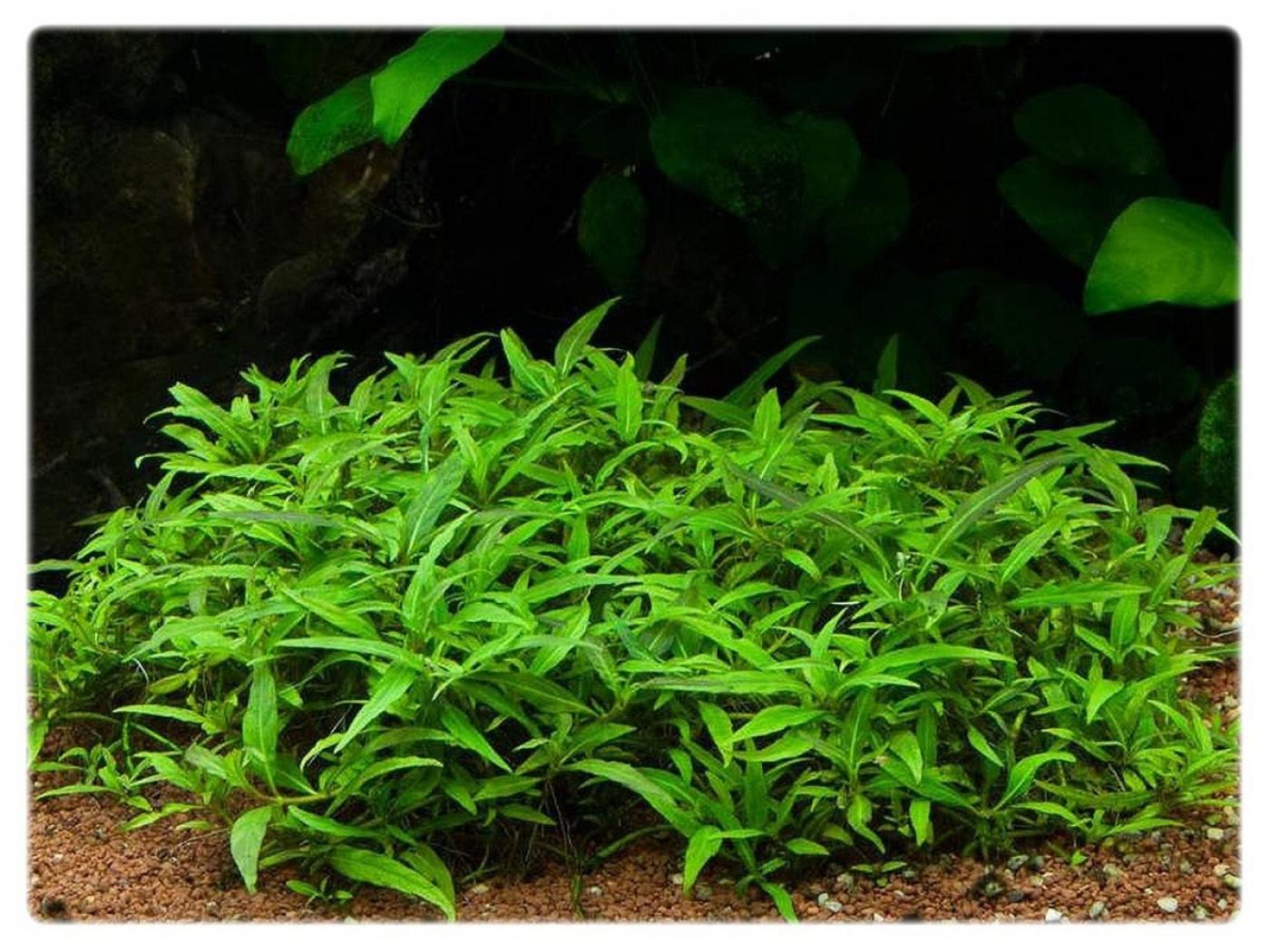
This superb foreground/midground plant is perfect for carpeting the substrate of the aquarium or covering decor!
Staurogyne sp. "Porto Velho" has only been known in the hobby for a few years, and it is still quite rare. This plant from South America grows moderately, develops a creeping growth habit under water and forms narrow lanceolate leaves with a long pointed tip. Its submerged form is greyish-green with a slight purple hue. This attractive carpet-forming plant needs good lighting and a good CO2 and nutrient supply.
The aforementioned Staurogyne repens (up to now also known as Staurogyne sp.) was also considered to be Staurogyne sp. 'Porto Velho', however, these two plants are not identical. Amongst others, Staurogyne sp. 'Porto Velho' differs from Staurogyne repens by its narrower, lanceolate leaf form with the apiculate tip and its rather greyish green and in some parts even purple leaf colour. Even its underwater form has clearly hirsute light brown stems, whereas the stems of submersed S. repens are green and hairless to only slightly hirsute.
There are not yet sufficient experiences for efficiently comparing the cultivation requirements of S. sp. 'Porto Velho' and S. repens, however, there is a tendency towards S. sp. 'Porto Velho' being a slower grower and overall more demanding but not requiring more light than S. repens.
Cultivating this species emersed can be surprisingly difficult. A slow but steady addition of macro- and micronutrients combined with strong lighting, is a must. The emersed form of S. sp. 'Porto Velho' has a wider, more ovate leaf, almost like Staurogyne repens, and a strongly hirsute stem (see pictures 3 and 4).In Contrast to Staurogyne repens (see that plant's profile), Staurogyne sp. 'Porto Velho' is only rarely cultivated in Europe at the moment. In the USA and Japan, however, it is one of the most popular new foreground plants.
This superb foreground/midground plant is perfect for carpeting the substrate of the aquarium or covering decor!
Staurogyne sp. "Porto Velho" has only been known in the hobby for a few years, and it is still quite rare. This plant from South America grows moderately, develops a creeping growth habit under water and forms narrow lanceolate leaves with a long pointed tip. Its submerged form is greyish-green with a slight purple hue. This attractive carpet-forming plant needs good lighting and a good CO2 and nutrient supply.
The aforementioned Staurogyne repens (up to now also known as Staurogyne sp.) was also considered to be Staurogyne sp. 'Porto Velho', however, these two plants are not identical. Amongst others, Staurogyne sp. 'Porto Velho' differs from Staurogyne repens by its narrower, lanceolate leaf form with the apiculate tip and its rather greyish green and in some parts even purple leaf colour. Even its underwater form has clearly hirsute light brown stems, whereas the stems of submersed S. repens are green and hairless to only slightly hirsute.
There are not yet sufficient experiences for efficiently comparing the cultivation requirements of S. sp. 'Porto Velho' and S. repens, however, there is a tendency towards S. sp. 'Porto Velho' being a slower grower and overall more demanding but not requiring more light than S. repens.
Cultivating this species emersed can be surprisingly difficult. A slow but steady addition of macro- and micronutrients combined with strong lighting, is a must. The emersed form of S. sp. 'Porto Velho' has a wider, more ovate leaf, almost like Staurogyne repens, and a strongly hirsute stem (see pictures 3 and 4).In Contrast to Staurogyne repens (see that plant's profile), Staurogyne sp. 'Porto Velho' is only rarely cultivated in Europe at the moment. In the USA and Japan, however, it is one of the most popular new foreground plants.


